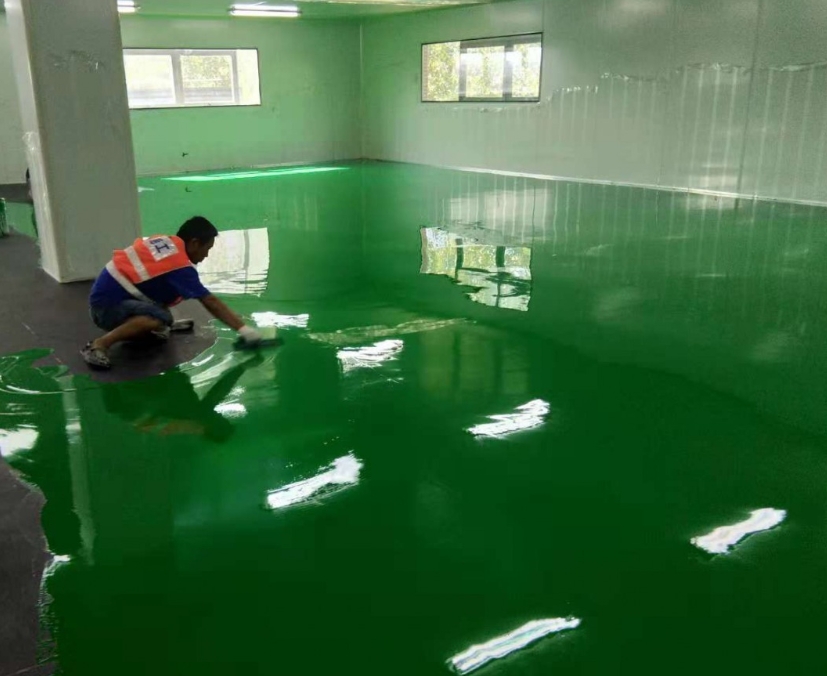How to Use Epoxy Resin? | Detailed Explanation

Epoxy resin is widely used in the industry. Do you know how to use epoxy resin? Next, we will talk about the application of it.
What is epoxy resin?
Have you ever considered what paint could be able to fix the crack you see when you walk down the street and glance at the wall? In general, we select epoxy resin.
Epoxy resin is a type of polymer with various applications. It is a synthetic resin. Different epoxy resins have various qualities and can be applied in various ways depending on the situation. They have significant differences in the amount of time needed for the curing process, the degree of hardness, and some other aspects.
The plastic is thermosetting. A rigid polymer known as the thermosetting resin is created by curing or molding components using techniques like heating or radiation. Curing and molding are irreversible processes. Thermosets don't start to disintegrate until the temperature reaches a certain degree after heating.
What are the essential characteristics of epoxy resin?
Here are some of its key traits.
l High strength
l Minimal shrinking
l Exceptional adherence to a variety of substrates
l Electrical insulation that is efficient
l Resistant to chemicals and solvents, and
l Cost-effective and low-toxic
l Exceptional abrasiveness;
l Doesn't break or splinter;
l Great UV resistance;
l High-intensity diversion temperature;
l High protection from acids;
l Outdoor areas have good weather resistance;
Epoxy resins are simple to cure and work with the majority of substrates. They frequently moisten surfaces easily and are especially well suited for applications involving composite materials. Some polymers, like polyurethane, can have their physical and chemical qualities improved by using it.
Notwithstanding, its two primary drawbacks are that they are weak and delicate to clamminess.
How to use epoxy resin?
1. Adhesives
Epoxy resin can serve as an effective adhesive, filling gaps while maintaining its original strength. It tends to be utilized to interface parts and perform fixes. You can apply a layer of epoxy resin to the two parts to be connected, and after it solidifies, they can be reassembled together. For example, it can be used to fix loose furniture joints. Epoxy resin is safe and durable, so it can also be used to repair little and fragile things, such as cracked mugs or damaged photo frames. It can be applied to the harmed area to reconnect the parts together. Once the epoxy resin solidifies, the damaged parts can be fully reinforced together. The effect of epoxy resin and glue is the same.
2.Making art
Epoxy resin does not decompose, so it can be used to make artwork similar to amber. You can put anything you want to keep or make into a transparent mold, and then pour enough transparent epoxy resin to fill the mold. A piece of art will appear after it solidifies.
For instance, you can use different flowers to create a small garden you want in a mold, and then pour enough transparent resin, finally, a transparent garden artwork that never fades will appear after solidifying.
3. Sealing a surface
Epoxy resin coating on the surface for sealing can add shine. Because of this feature, it can be applied to metal to forestall rust, or to the ground as a wear-safe covering. Besides, it can likewise be applied to the surface of wooden doors or furniture as a protective layer. If you want to add other styles, you can also add other materials, for example, gold foil, to the epoxy resin. It can make the things that it protects have a longer service life and keep it from cracking.
Conclusion
To sum up, about how to use epoxy resin, we should know epoxy resin is a thermosetting plastic with a large number of modern applications. It tends to be used as an adhesive to fix cracks or bond jewelry, as well as to make workmanship pieces. It can likewise be applied to increase the luster of the surface of furniture or floors and serve as a protective layer. The development of technology is exceptionally fast, and it is believed that epoxy resin can play a greater role in the future, and its shortcomings will be redressed, and its advantages can be fully utilized.

